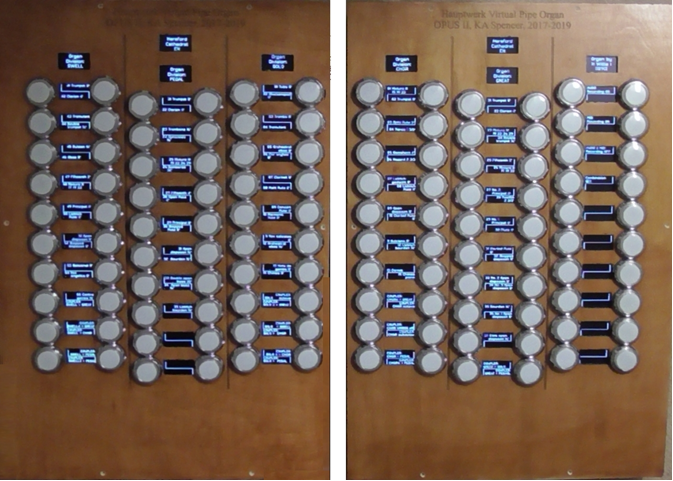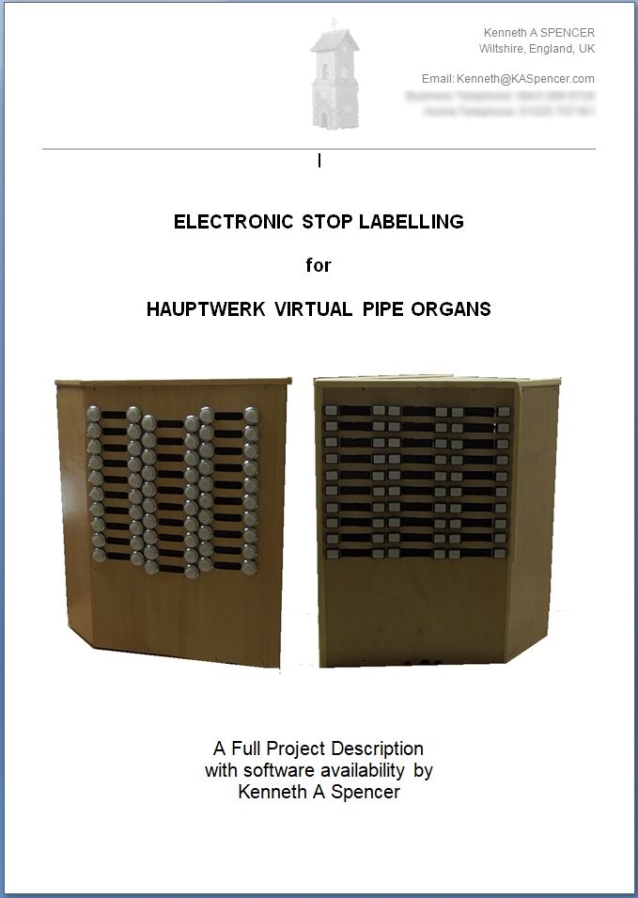A PAIR OF READY BUILT ELECTRONIC STOP LABEL KITS
FOR YOUR HAUPTWERK CONSOLE
I have had a significant amount of interest in my Electronic Stop Labelling (ESL) Project, some from this forum, as well as from elsewhere, and so I trust that the moderators will not object to me offering this item of news via this group, as it answers questions which have been raised to me by a number of group members.
Many people have contacted me about the Electronic Stop Labelling Project (ESL) and the associated kit of principal parts. It is one of those features that so many players of Hauptwerk consoles who happen to have a significant number of installed organs would love to have on their own consoles.
A goodly number of people have bought the Core Kit Construction Manual, and some have been brave enough to seek some of the core kit parts. But I am the first to accept that it is a daunting prospect for anyone except those accustomed to building this kind of electronic project. On top of that, the LCD Labelling dialogue (although we use OLEDs rather than LCDs) in Hauptwerk is also quite daunting, and rather fussy, especially for a 100+ stop instrument. Fortunately the ESL project includes quite a lot of advice on that part of the system so that it may be used a little more ergonomically.
So I set about building a pair of stop plates, exactly as per the Core Kit Construction Manual – that is, in addition to those that are already in my own console, and which have been in use for almost two years now.
Having completed that build, I am announcing the availability of the pair of ready built stop plates, one for your Right Jamb and one for your Left – complete and tested, ready to install into stop jamb housings, and connect to your MIDI Encoders and Decoders.
Send in your expression of interest by email to ESL@KASpencer.com – email messages only please - and I will send you a detailed 14 page description of the ready-built system. There is only one pair built currently and available, so of those declaring interest, I'm afraid that in the end only one can be lucky on this occasion!
Here is a picture of those self-same stop plates that I am referring to. They are ready and waiting for your interest.

Kenneth Spencer






